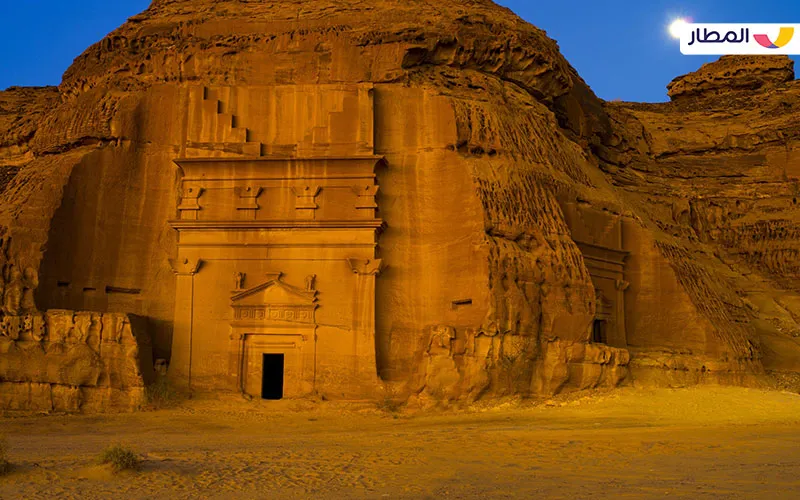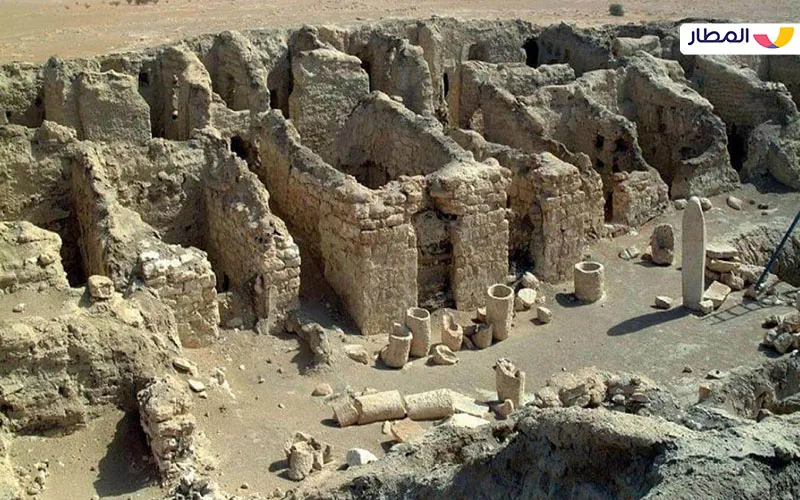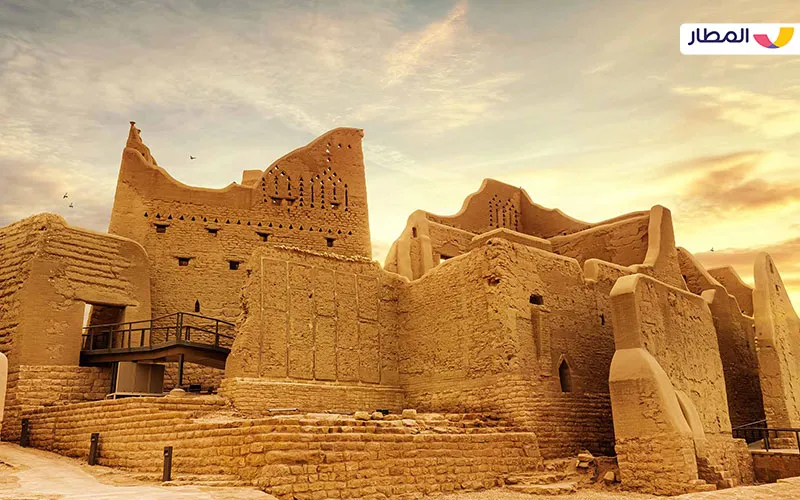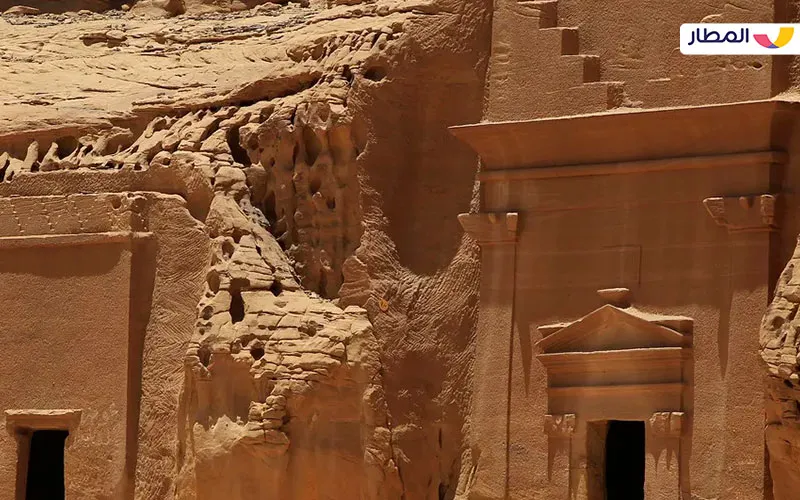The Kingdom of Saudi Arabia is a large and sprawling country with an essential and distinctive location, and its seaports indicate that its cities throughout history were not isolated but open to other civilized horizons of surrounding or distant countries. Wherever you go in the Kingdom of Saudi Arabia, historical and archaeological monuments will await you. Some of them date back to very ancient times, i.e., pre-Islamic, and some date back to the era of the emergence of Islam and beyond.
Undoubtedly, the Kingdom of Saudi Arabia, whose territory embraced the call to the Islamic religion and then the emergence of the first Islamic metropolis in Medina, includes many monuments related to this era and beyond. Even the most significant monuments about the beginning of the Muslim community are those that Saudi Arabia has in different cities. But this does not diminish the value of historical monuments dating back to the eras and epochs that preceded or followed Islam. This means that the monuments we will review will be diverse and cover the most prominent from different periods. Before going into details, we will list the addresses of the monuments that will be highlighted in this article:
- Mada’in Saleh
- Jeddah historical landmarks
- Al-Faw village
- Historical Diriyah
- Al-Ahsa Oasis
1- Mada’in Saleh
Location: Hegra

One of the ancient archaeological sites in Saudi Arabia is the so-called Madain Saleh or Al Hijr. Mada’in Saleh is located in Medina and the province of Al-Ula, specifically in the kingdom’s northwest. Saleh’s cities are so old that they date back to the first century AD, meaning they are about 2000 years old. Due to the importance of this archaeological site, it was inscribed on the UNESCO World Heritage List in 2008.
Mada’in Saleh contains 131 sculptures in longitudinal rocks distributed over an area of up to 12 square kilometers. Of these sculptures, there are 45 with inscriptions in the ancient language.
Mada’in Saleh is considered the largest southern settlement of the Nabataean kingdom after Petra in Jordan. When you reach it, you will be impressed by the creativity of the Nabataeans, a group of Arab tribes who came from Petra to Al Hijr and founded an ancient civilization there from the first century AD to approximately 106 AD.
2- Jeddah historical landmarks
Location: Al-Balad

Suppose you are a fan of the old style in constructing cities, houses, narrow streets, and paths that feel nostalgic for the past. The historical Jeddah, with its monuments still standing, offers you this beautiful and fertile experience.
Historical Jeddah has resisted harsh historical factors, preserving an aspect of its rich urban heritage. You will be thrilled to discover the old houses from the inside, and the large and numerous doors considered the main entrances to the Old City.
Jeddah joined the UNESCO World Heritage List in 2014.
Visiting Jeddah’s historical landmarks is not only a visit to history, but you are on a date to discover the famous and beautiful markets surrounding the place. You will have a dining experience at one of the restaurants serving authentic cuisine cooked with the finest spices and the most delicious flavors.
3- Al-Faw village
Location: Qaryah Qaryat al Faw

It is one of the most famous and significant archaeological sites in Saudi Arabia. It is located 700 km southwest of the capital, Riyadh. It overlooks the northwestern border of the favorite Rub al-Khali desert. Other names, such as Dhu al-Jinan and Al-Hamra Village know this village.
In the village of Al-Faw, you will find temples, houses, markets, and many wells. You will find caves and inscriptions on some of the large rocks. Some studies indicate that it was the capital of the first kingdom of Kanda in the middle of the 4th century BC.
4- Historical Diriyah
Location: Diriyah

It is one of the historical cities that were founded for the modern history of the Kingdom of Saudi Arabia. It is located about 20 kilometers southwest of Riyadh. It is also one of the cultural monuments and contains many monuments through which you can anticipate the events of the first Saudi state. It was inscribed on the UNESCO World Heritage List in 2010.
Diriyah includes many historical neighborhoods, namely Al-Tarif neighborhood, Al-Bujairi neighborhood, Al-Sarayah neighborhood, and Ghusayba neighborhood. The custodian of the Two Holy Mosques, King Salman bin Abdulaziz, has inaugurated a project to develop the Al-Turaif neighborhood, which is the most important neighborhood of Diriyah, as well as the development of the AL-Bujairi neighborhood.
From here, in the city of Diriyah, you will walk among these ancient neighborhoods and their monuments, stand at the gates of palaces, and participate in activities and events held there throughout the year.
5- Al-Ahsa Oasis
Location: Sahoud Palace

It is one of the sites inscribed on the UNESCO World Heritage List 2018. It includes many historical sites and archaeological buildings, including the Jawatha mosque, the princely school, the Sahood Palace, the Uqair port, the Caesarea market, the Hazm Palace, and others.
Al-Ahsa Oasis also houses the world’s largest and most famous palm oases. It houses 3 million palm trees that produce the finest dates. The historical location of Al-Ahsa made it play an essential role through its connections with civilizations in the Levant and Mesopotamia. A visit to the Al-Ahsa area is a visit to a place that is striking in history and a metaphor for the oldest civilizations in the region.
This was a simple sample of some historical monuments in Saudi Arabia. This is a reminder that this spot of land, which is geographically located within the ancient world, is fraught with monuments and historical sites distributed over different periods. We will enumerate some of them for you, but limiting them in this hurry is impossible.
Among the most prominent historical monuments of the Islamic era are the Holy Mosque, the Prophet’s mosque, the Quba’a Mosque, Hira’a Bay, Mount Uhud, Mount Arafat, Thor Bay, and other terrible and essential monuments.
Other monuments of various time epochs include the historical inscriptions of Hawt, the kingdom of Jebbah, the Tabluk fortress, Ain Zubaydah, and many others.
Visiting the museums equipped by the kingdom makes it possible to view some of these landmarks and monuments, with which this spot has enriched human and world heritage.

